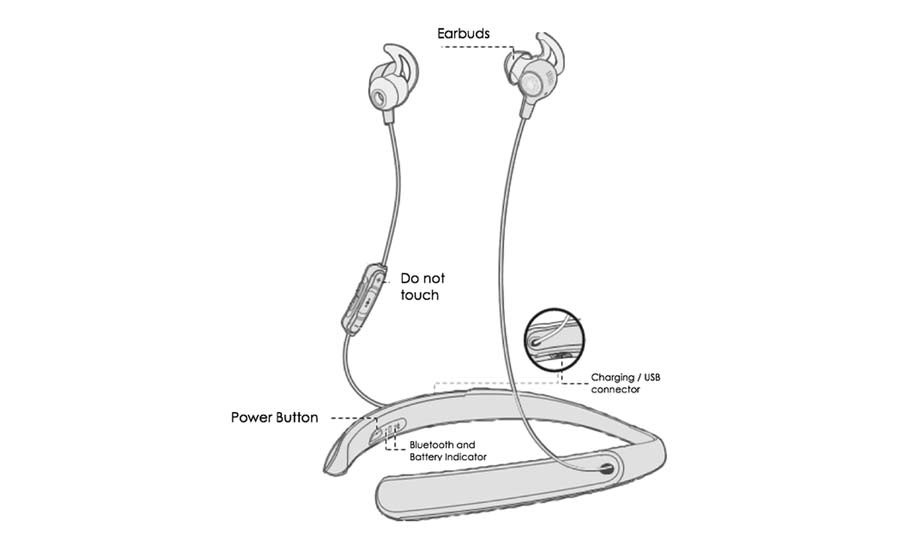Is That It!?
Bose has finally announced the launch of its much-anticipated self-fitting hearing aid. According to Bose, the SoundControl™ Hearing Aids are intended to amplify sound for individuals 18 years of age or older with perceived mild to moderate hearing impairment. They say that these are hearing aids redefined that allow you to "hear the difference", "tune it yourself”, “skip the appointments” and “pay less”. To be honest, on the face of it, they seem a bit bog-standard. They don't offer audio streaming, no calls, no music, just a simple Bluetooth LE connection to the app on your smartphone. Maybe it is just I was expecting more? Doubtless, though, the devices are important and they represent the entry of a very major consumer electronics player into the world of traditional hearing aids. Anyway, here is what you need to know.

The Pertinent Facts
The devices are self-fitted and no preprogramming or hearing test is necessary. They are intended for Direct-To-Consumer (DTC) sale and the soon to be active Over-The-Counter market. They will be priced at $849.95 for a binaural set and will come with a 90-day trial. Bose says it will offer strong product support from their hearing team. What that means, remains to be seen. They say the SoundControl™ Hearing Aids will initially be available on a limited geographic basis, with expanded availability in the United States within the coming year.
Pretty Strong Claims
Bose is making some pretty strong claims about their hearing aids and their CustomTune technology. Citing a study (1.) conducted with researchers at Northwestern University, Bose says:
- CustomTune™ provides audiologist-quality customisation.
- Users were happier with the sound quality compared to prescription-fit users.
- On average, there was no difference in hearing-in-noise performance or hearing benefit between CustomTune™ and prescription-fit.
In the research cited by Bose, most users using the CustomTune system ended up close to an accepted good hearing aid fitting. This was established by running ear canal measurements to see how close research participants self-selected amplification output was to the output of a perfectly fit hearing aid. As our friend Abram Bailey has already pointed out, the device used for the study was not the SoundControl.
A Prototype Device

It was a prototype device that used typical ear full-body earbuds. My concern, which I would have to say will be shared by many, is that the prototype device will have offered a very different sound experience than the new SoundControl hearing aids, in particular if they are fitted with the open tips. As Abram Bailey said, I would like to see them do the study again with the finished product.
Bog Standard
The devices are bog-standard, they have no Bluetooth connection for audio streaming, and they don't have a telecoil. That means absolutely no chance of audio streaming to the devices for users. They don't offer a rechargeable device and the only option is a traditionally powered 312 battery device. I mean for the price, that is probably acceptable for most, but Bluetooth and rechargeability have captured the imagination of the buying public.
Limited Availability
The devices will be rolled out nationally in the US over the coming year, but there will be limited geographic availability initially. The devices will be available from May 18th in Massachusetts, Montana, North Carolina, South Carolina and Texas.
What's In Them? Who Knows?
While the Bose site is a little light on technical details concerning the function of the aids and their features, we would probably have to accept that with their huge audio experience, the aids will probably sound pretty good. It will be interesting to see how they manage the feedback problem though, I would say up to now, it has probably never been a concern for them.
Again, it will be interesting to see what they do for noise reduction, up to now, they have never had to worry about the type of noise reduction needed for hearing aids. So we are left with a few unanswered questions, but I would imagine the answers will become clearer as the devices hit the market.
Got To Be Fair
In fairness to Bose, there isn't a device available at these prices that offers Bluetooth audio connection. The Lexie devices from HearX that we spoke about recently don't, but they do offer a telecoil. One way or the other, the introduction of the SoundControl devices signals a sea change in hearing device availability and access that we have been expecting for quite a while.
We can only expect this market to explode when the OTC regulations are finally enacted. The entry of Bose into the hearing aid market may also be a confirmation of the thoughts of many that other consumer electronics company may enter the market. We know that Apple is undertaking audiological research, Samsung had a good look at the hearing aid market and passed a few years ago, but with the advent of a DTC or OTC market, may they re-think the decision?
A Seminal Moment?
For consumers, the entry of Bose into the fray can only be seen as a good thing, offering more choice and accessibility than before. I suppose, that depending on their success, we could look back at this as a seminal moment in hearing care, I just wish the devices were a little bit sexier, but hey, that's just me, never satisfied.
Like us on Facebook by clicking the button below to keep up with our latest utterances. Alternatively, if you don't like Facebook, sign up for the newsletter below. It is important to remember, a hearing aid isn't properly fitted unless they do Real Ear Measurement.
- Validation of a Self-Fitting Method for Over-the-Counter Hearing Aids, Andrew T. Sabin, Dianne J. Van Tasell, Bill Rabinowitz, Sumitrajit Dhar: https://journals.sagepub.com/doi/10.1177/2331216519900589










